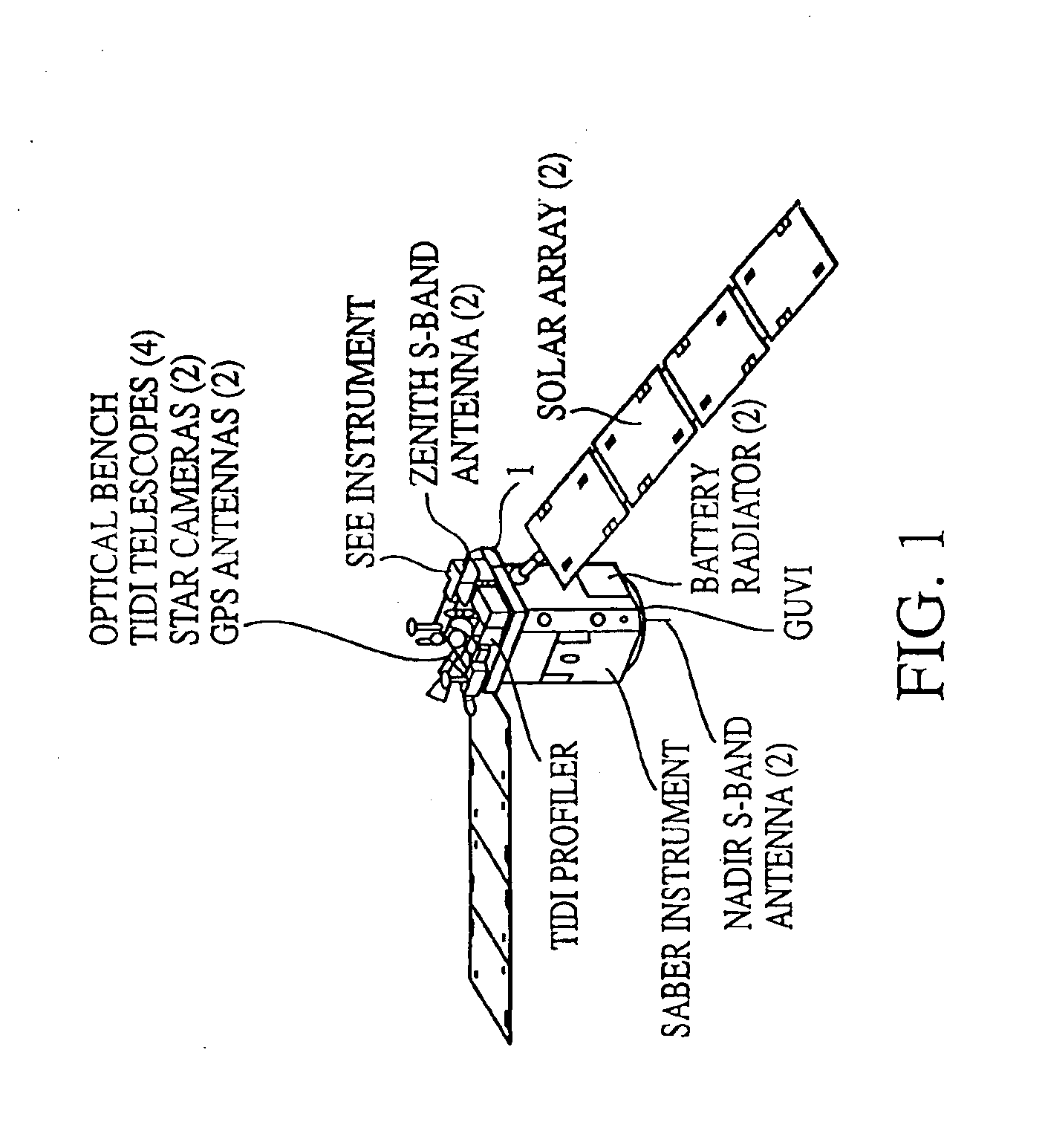Extended kalman filter for autonomous satellite navigation system
a satellite navigation and filter technology, applied in the field of global positioning system based navigation techniques, can solve the problems of inability of most spacecraft operators to find other tracking methods, high cost of operating such systems, and inability to accept most spacecraft navigation applications, etc., to achieve robust signal acquisition, command and telemetry capability, navigation, and orbit determination algorithms.
- Summary
- Abstract
- Description
- Claims
- Application Information
AI Technical Summary
Benefits of technology
Problems solved by technology
Method used
Image
Examples
Embodiment Construction
The TIMED spacecraft major components include a system for sounding of the atmosphere using broadband emission radiometry to measure pressure, temperature and infrared cooling. This is the SABER instrumentation package. Located on the underside of SABER, FIG. 1, is a Global Ultraviolet Imager (GUVI) for obtaining temperature profiles and auroral energy inputs. A pair of NADIR S-band antennas are located with the GUVI.
A graphite epoxy optical bench is positioned on top of the SABER instrumentation package. The bench serves as a mounting base for the TIMED Doppler Interferometer (TIDI) profiler and four TIDI telescopes that constitute the TIMED Doppler Interferometer system which obtains wind and temperature profiles. A pair of star cameras, positioned on the bench, provide inputs to attitude star trackers which supply the attitude knowledge requirements of the TIDI. Also positioned on the optical bench is the Solar Extreme-UV Experiment (SEE) which measures solar x-ray, UV and FUV ir...
PUM
 Login to View More
Login to View More Abstract
Description
Claims
Application Information
 Login to View More
Login to View More - R&D
- Intellectual Property
- Life Sciences
- Materials
- Tech Scout
- Unparalleled Data Quality
- Higher Quality Content
- 60% Fewer Hallucinations
Browse by: Latest US Patents, China's latest patents, Technical Efficacy Thesaurus, Application Domain, Technology Topic, Popular Technical Reports.
© 2025 PatSnap. All rights reserved.Legal|Privacy policy|Modern Slavery Act Transparency Statement|Sitemap|About US| Contact US: help@patsnap.com



